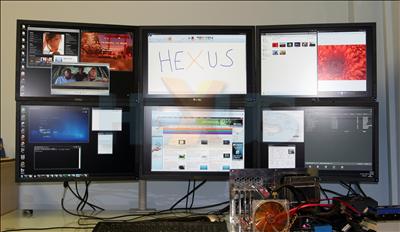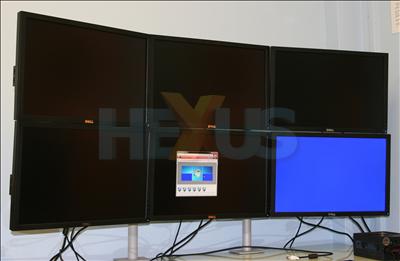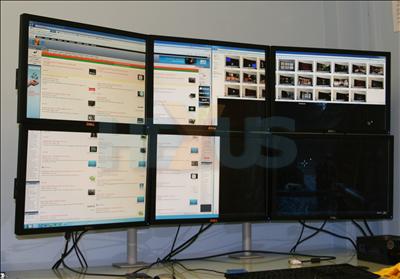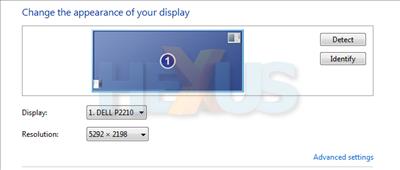Setup and general usage
Using the Radeon HD 5870 Eyefinity 6 Edition graphics card is itself no different to any other modern card - it slots into a PCIe x16 slot, you install the latest Catalyst drivers, and hey presto you're away.
Trouble is, you've then got to build your display wall and connect all your monitors to the card - believe us when we say it's trickier than it sounds.
For the purpose of our review, AMD kindly provided six 22in Dell P2210 monitors, each providing DisplayPort connectivity, a TN panel with a 1.000:1 typical contrast ratio, a 5ms response time and a 1,680x1,050 resolution. Not by any means the best 22in monitor we've ever seen, but six of them combine to create a massive 5,040x2,100 resolution, and at around £180 apiece, all six can be had for just over a grand.
Mounting the displays on the AMD-provided stand was fiddly to say the least. After hours of toiling, we were able to get all six displays roughly in alignment, but we were never able to completely eliminate the gaps between individual monitors. How many men can it take to build an Eyefinity setup? In our case, quite a few, as evidenced by our build video:
Once up and running, however, there's no denying the initial wow factor of seeing six displays mounted to your desk.
Those who've worked with multi-monitor configurations will appreciate just how useful the additional desktop real estate can be. In terms of productivity, this is about as good as it gets.
However, whilst six extended displays has its benefits for general desktop use, AMD attempts to provide more through its Catalyst software suite. Using the software, it's possible to essentially trick your Windows operating system into believing the multiple attached monitors are in fact one single display.
In our case, that involved creating a group of six monitors with a single 5,040x2,100 resolution. AMD's software makes the process a breeze, with users able to identify, group and arrange displays at the click of a button..
Having one giant 5,040x2,100 display will have obvious benefits whilst gaming, but in desktop mode it highlights a few potential Eyefinity shortcomings.
With Windows maximised, you'll have to put up with display bezels breaking up your content. We've found it's possible to get accustomed to the disjointed experience with time, but it's unlikely to ever feel truly seamless unless you're using displays with ultra-thin bezels - or better yet, no bezel at all.
Windows 7 users will also find that a single display group can detract from some of the operating system's built-in functionality. Using Aero Snap, users can continue to tile two windows alongside one another on the desktop, but using a row of three displays will result in your windows being tiled across one-and-a-half monitors. Not quite ideal, and you'll run into a few similar niggling issues.
For example, the majority of Windows desktop prompts tend to appear in the centre of the screen - right where they'll be disjointed by a big, ugly bezel.
Aware of the potential bezel problems, AMD has implemented a software solution dubbed bezel compensation. Using an on-screen wizard, users can compensate the disjointed effect by hiding parts of the image behind the bezels. The idea is that your content will no longer jump from display to display, with parts of the image instead hidden from view.
The bezel compensation wizard is again easy to use - with users only needing to align the triangular image between displays. What you're trying to imagine is a perfect triangle shape continuing through the bezel.
What's interesting is that the implementation of bezel compensation actually increases your desktop resolution, as Windows takes into account the size of the bezel and the invisible underlying pixels. With our six-way display group compensated, Windows reports our desktop resolution as 5,292x2,198 - an increase of 252 pixels horizontally and 98 pixels vertically.
As you'd expect, bezel compensation doesn't provide a whole lot of use for general computing needs - it's no good hiding text, after all. AMD is instead setting its sights on the enthusiast gamer, and it reckons six bezel-compensated displays could make for gaming heaven. But does it?














